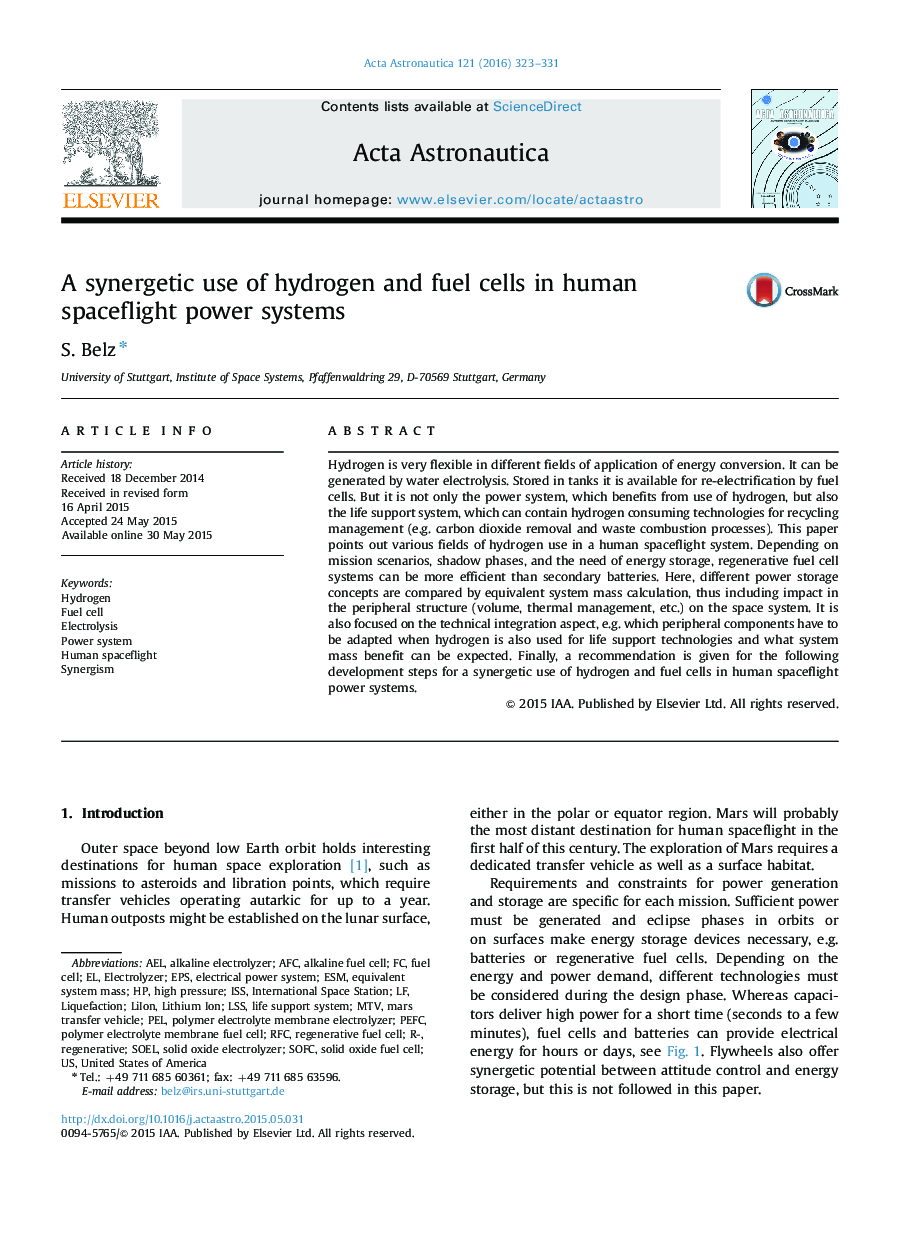| Article ID | Journal | Published Year | Pages | File Type |
|---|---|---|---|---|
| 1714238 | Acta Astronautica | 2016 | 9 Pages |
•R-AFC or R-PEFC systems are more lightweight than a R-SOFC system.•The R-PEFC system enables a better linkage to the LSS than the R-AFC due to gas purity.•H2 masses from/for the LSS are very low compared to the RFC system for energy storage.•The LSS can benefit from O2 and H2O from the RFC system.•A LiIon battery system is more lightweight for short shadow phases.
Hydrogen is very flexible in different fields of application of energy conversion. It can be generated by water electrolysis. Stored in tanks it is available for re-electrification by fuel cells. But it is not only the power system, which benefits from use of hydrogen, but also the life support system, which can contain hydrogen consuming technologies for recycling management (e.g. carbon dioxide removal and waste combustion processes). This paper points out various fields of hydrogen use in a human spaceflight system. Depending on mission scenarios, shadow phases, and the need of energy storage, regenerative fuel cell systems can be more efficient than secondary batteries. Here, different power storage concepts are compared by equivalent system mass calculation, thus including impact in the peripheral structure (volume, thermal management, etc.) on the space system. It is also focused on the technical integration aspect, e.g. which peripheral components have to be adapted when hydrogen is also used for life support technologies and what system mass benefit can be expected. Finally, a recommendation is given for the following development steps for a synergetic use of hydrogen and fuel cells in human spaceflight power systems.
